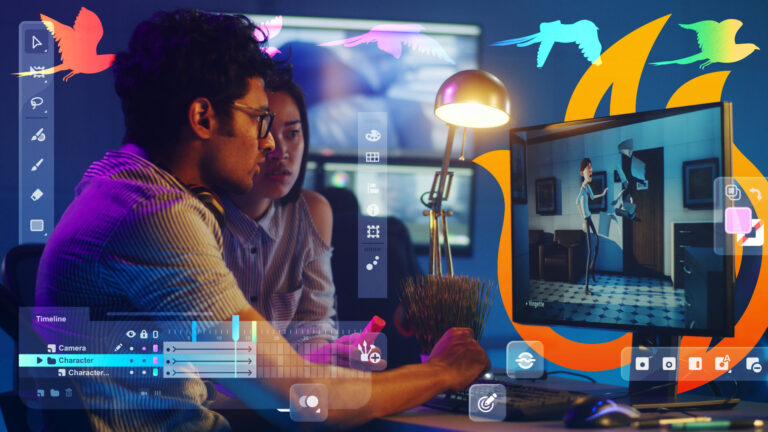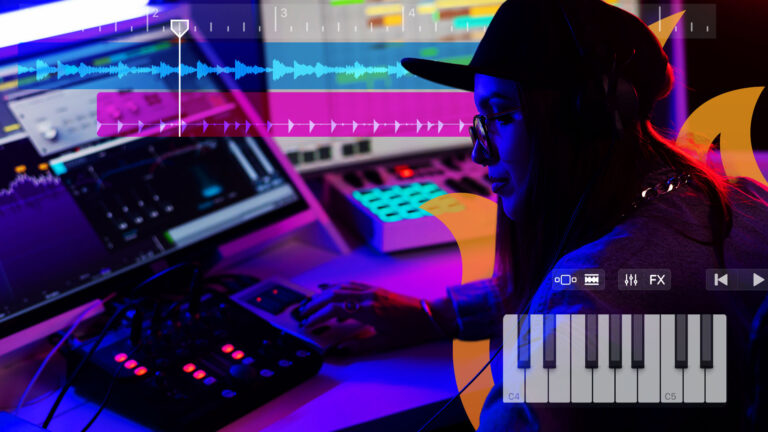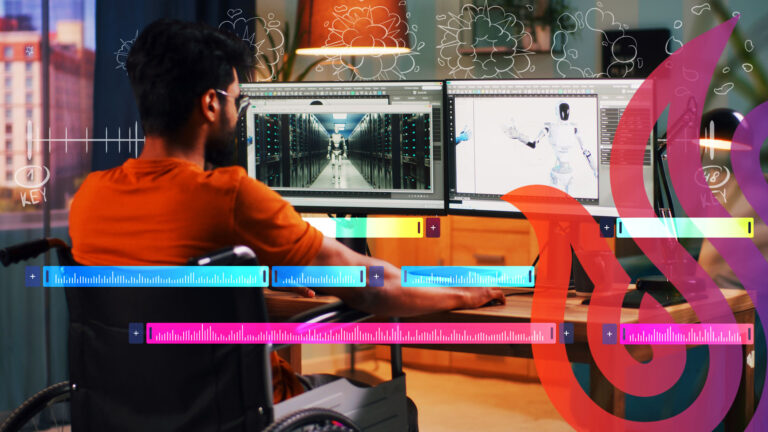The world of 3D animation is filled with exciting opportunities for eager artists ready to push the boundaries of their ability. The heart of that world is a region known as Silicon Valley. This haven for tech enthusiasts and digital artists has been featured prominently throughout culture for good reason. Silicon Valley is indeed the ideal destination for aspiring animators and digital artists of all stripes.
The type of work performed in Silicon Valley involves cutting-edge technology and advanced thought processes. With the proper training and dedication to your craft, you can carve out success in the big leagues.
What Does a 3D Animator Do?
In general, 3D animators add motion to the characters and objects that populate digital scenes. However, you can expect to perform a variety of other miscellaneous tasks to keep production going smoothly. Your core animation skills should be supplemented with additional digital art knowledge.
Character Rigs and Key Frames
Animating characters and objects involves the careful use of character rigs and key frames. As the name implies, character rigging involves setting up the people, creatures, and other living beings within the digital world so that they move in a believable manner. Realistic movement is achieved by simulating the bone and muscle structure of the bodies. For example, everyone in the audience will know what it looks like when a human walks. Your animations will need to reflect what people come to expect from motions they have witnessed millions of times.
Key frames are used to animate elements of a scene that are more fantastic or not familiar to general audiences. Each key frame is a crucial step in the movement being conveyed by the animation. By capturing each critical point in a movement arc, you can quickly play each key frame in sequence to create the illusion of movement. If you have ever made an animation by drawing sequential pictures on a pad of post-it notes and quickly flipping through each page, then you will already be familiar with the concept of key frames.
Modeling, Texturing, and Rendering
As for other responsibilities, you may not always receive art assets in a functioning or visually appealing state. When this happens, you will need to make any adjustments and alterations required to make the asset suitable for animation. There is no point in animating a character or object model before the form is finalized. Should the size or shape of an asset be changed, the animations you created previously will no longer apply to the new design. Skills such as modeling, texturing, and rendering are all incredibly useful to pick up alongside your critical animation studies.
How Do You Become a 3D Animator in Silicon Valley?
The ideal way to start your career as a 3D animator is to attend a creative arts college in Silicon Valley. You may be tempted to start learning with online tutorials and how-to videos. While these resources can be extremely helpful in solving unique problems, they are no substitute for a substantial curriculum that provides the fundamental basis of knowledge you seek. Without a sturdy foundation of quality information, you will not be able to tell if a tutorial resource is worth paying attention to or not. The information spread online can be outdated, distorted, or completely incorrect.
On the other hand, a creative arts college will maintain a balanced curriculum curated by industry professionals. The people who work at the animation houses you desire to join one day lay out exactly what they expect from animation graduates and other digital artists. By following this roadmap, you give yourself the best chance of building a successful career in Silicon Valley.
What Do You Learn During a 3D Animation Program?
A 3D animation program walks you through each step of the animation pipeline and software development process. Essentially, you get a taste of each step required to convert an idea from your thoughts into a tangible finished product that can be released to the public. You will learn all about the hardware, software, and techniques needed to make it in Silicon Valley.
Basic Art
Before jumping into a digital workstation, you will first learn about the basics of art and what makes an image appealing to the human eye. There is an exact science that goes into the most impressive art projects. When creative ambition meets technical excellence, it results in all the classics, blockbusters, and masterpieces that have been produced throughout human history. Examining famous works, both analog and digital, will reveal the techniques used to craft them. From there, you can use the same techniques as legendary artists to vastly improve the quality of your work.
Pre-Production Principles
From there, you will begin your foray into pre-production principles. The main part of this section is story boarding. A story board is a simple comic-style drawing that details the main events of an animation project. By plotting it all out on paper first, it becomes much easier to start working in the digital space.
Animation Fundamentals
You will then go on to study the fundamentals of animation through the use of industry-chosen software and hardware. You need some powerful machines to adequately run professional-grade applications for animation. The chance to work with cutting edge tech used by pros is one of the best benefits to attending a creative arts college. With firsthand experience under your belt, you will be quite comfortable when demonstrating your merit for professional work.
You will learn the different approaches for animating two-legged-characters, four-legged characters, and various objects that commonly move throughout scenes. Having a core understanding of all three of these animation methodologies will equip you with what you need to creatively manipulate the digital assets you come across. Being able to confidently tell your future employer that you can animate anything required will help you stand out amongst fellow position candidates.
Film Production Concepts
Your animation studies are accompanied by film production concepts. Not only will you learn to animate scenes, but you will also explore how to put each scene together in the best way possible. Video editing is a crucial skill for any seasoned animator. In a pinch, you can make edits on the fly and ensure your portion of the project is up to professional standards. Communication plays an important role in each area of production. As modern animation pieces require dozens or hundreds of collaborators, there needs to be a stable way to keep everyone on the same page.
Teamwork and Communication
As a digital artist, teamwork and clear communication are a must. Developing the social skills necessary to mediate problems and compromise over disagreements is a major part of your degree program. This is achieved by using a group project format. You will develop your own animations with a team and keep in communication each step of the way. By the end of the curriculum, you will know how to fit into a professional animation pipeline.
What are Some of the Animation Opportunities in Silicon Valley?
Silicon Valley is ripe with potential employers looking for highly trained creative arts college graduates. This is quite convenient for students who are already living in the region. Many tech jobs will ask you to relocate if you live in other parts of the world. Being in the center of the action already furthers your chances of landing a job. Here are some of the most prolific employers located in Silicon Valley that eagerly hire fresh talent from reputable creative arts colleges.
This search engine giant needs extraordinarily little introduction. Although you may think of the company as delivering text-based content, they also develop a variety of other tech applications. Many of the additive services provided by Google require a team of animators to craft tutorials, make animations for software commands, and contribute to Google’s suite of educational resources. The company may hire you to develop educational content that mirrors what you learned during your degree program. Applying for non-animation jobs is also a solid option. With a market leader like Google on your resume, any animation house or tech company will be happy to have you.
Meta
Meta’s collection of social media applications demands a steady supply of animators to keep up the appearance of each service. However, the real meat of your opportunities will come in the form of the Metaverse platform. Meta plans to create thriving virtual reality worlds for social media users to communicate in. Much like any other video game or VR project, each element of the Metaverse must be carefully animated by a skilled team. Your experience creating digital art in teams throughout your education will perfectly prepare you for this role. As with Google, securing a behemoth like Meta for your resume will greatly expand your available job options down the road.
Apple
Apple has a growing number of opportunities for animators of all skill levels thanks to their increasing push into the gaming market. Each video game produced for the Apple Arcade service will employ numerous digital artists. As the service continues to become more popular, the number of games, and animator slots will increase. You can also work on animating marketing materials and other online assets. Many people who develop Apple software can animate if need be.
Working in a Dedicated Animation Studio
In addition to the giants listed above, Silicon Valley is home to dozens of dedicated animation studios for graduates to choose from. Animation houses typically work on any project that gets licensed out to them. You may work on a blockbuster film at the beginning of the year and a smaller local TV production at the end of the year. These work conditions are the perfect way to hone your skills and build a large portfolio of work to show off for future employment. If you are having difficulties getting through to the corporate giants, then you may wish to augment your portfolio at an independent studio.
Want to Learn More?
If your passion is for visual effects, 2D or 3D animation, concept art for video games or blockbuster films, this is the Digital Arts & Animation degree program for you. Gain the digital arts and animation skills you need to kick off your career in this dynamic and growing industry.
University of Silicon Valley is uniquely poised to offer a meaningful and valuable education for 21st century students. We believe in an education that directly correlates with the work you’ll be doing after you graduate. Interested in learning more? Contact Us today.


